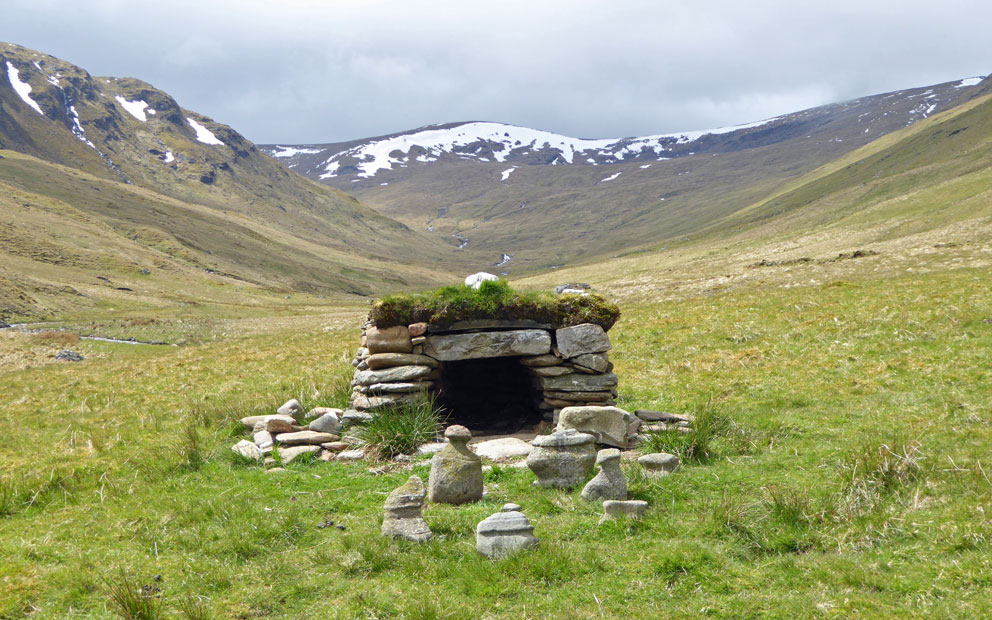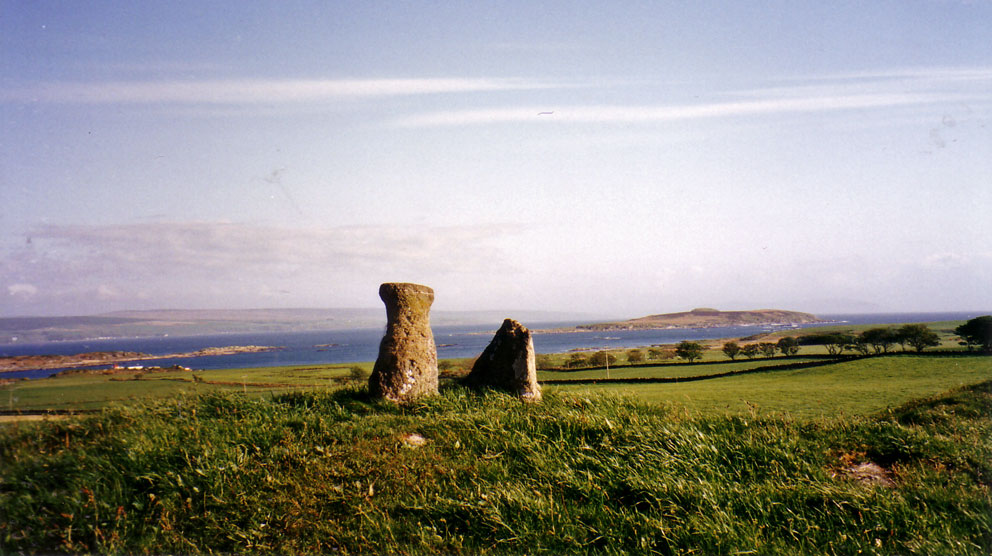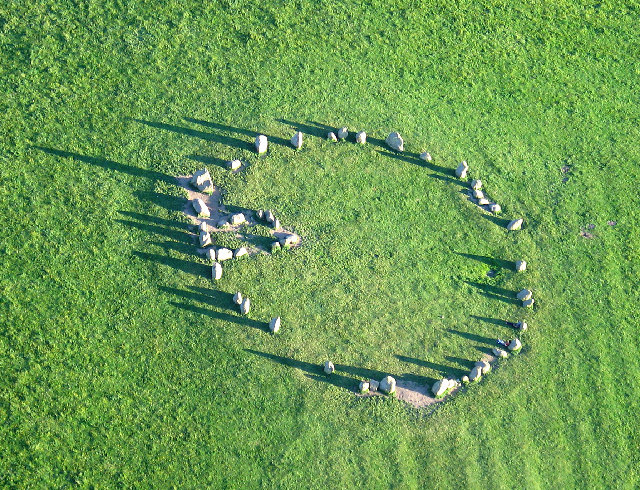I first came across Bodach and Cailleach stones when I visited the island of Gigha (see the March 18, 2013 post). After that visit to Gigha I came across a site called 'Tigh nam Bodach' on OS Landranger map 50 (NN381427). A little research showed it to be a another pre-Christian shrine; a little stone house with not only Bodach and Cailleach stones like Gigha, but a nighean (daughter) stone, along with other stone children.
Even more fascinating was that a local shepherd still took on the responsibility of storing the stone family securely in their little house every Samhain, and then returning on Beltane (in May) to set them out for spring and summer. A tradition that has been carried on for centuries.


https://marccalhoun.blogspot.co.uk/sear ... h%20Stones
Looks like the two giants throwing stones at each other have been brought down to size and turned into stone themselves. Perhaps it's a bit like having a photograph of the Queen on the wall? Remembrance of times past.
In Cumbria though they go in for more abstract representations as with Long Meg and her Daughters.
The Long Meg monolith has motifs on the face looking towards the circle arranged in three sections. The markings include: in the centre, a cup at the centre of three rings, a spiral of four turns and various concentric arcs; in the lower section, three faint figures at the left-hand corner, an anti-clockwise spiral, cup and ring and various concentric arcs; in the upper section are faint rings, ovoids, spirals and other markings. Some of the stones in the circle itself have artificial markings on them as we
There is also a cup and ring marking. I wonder if these sort of things are like diagrams to show on a small scale what the larger circles were all about?

May2005.jpg)
The most famous of the many legends that surround the stones is that they were once a coven of witches who were turned to stone by a wizard from Scotland named Michael Scot. It is said the stones cannot be counted - but, if anyone is able to count them twice and come to the same total - the spell will be broken or it will bring very bad luck. Another legend states that if you walk round the circles and count the number of stones correctly, then put your ear to Long Meg, you will hear her whisper. The name itself is said to come from a local witch, Meg of Meldon, who was alive in the early 17th century.[18] From a certain angle, the Long Meg stone resembles the profile of a witch. Long animal bones found buried at the site may have been misinterpreted in the past as a 'Giant's bone and body'
https://en.wikipedia.org/wiki/Long_Meg_ ... _Daughters
Then there is the nearby Castlerigg stone circle.
The stones are of a local metamorphic slate, set in a flattened circle, measuring 32.6 m (107 ft) at its widest and 29.5 m (97 ft) at its narrowest. The heaviest stone has been estimated to weigh around 16 tons and the tallest stone measures approximately 2.3m high. There is a 3.3m wide gap in its northern edge, which may have been an entrance. Within the circle, abutting its eastern quadrant, is a roughly rectangular setting of a further 10 stones. The circle was probably constructed around 3200 BC (Late Neolithic/Early Bronze-Age), making it one of the earliest stone circles in Britain and possibly in Europe.[6] It is important to archaeoastronomers who have noted that the sunrise during the Autumn equinox appears over the top of Threlkeld Knott, a hill 3.5 km to the east. Some stones in the circle have been aligned with the midwinter sunrise and various lunar positions.

https://en.wikipedia.org/wiki/Castlerigg_stone_circle
As far as I know there are no stories of giants about Castlerigg. A large Roman camp was found nearby showing that the area was strategically important. Perhaps it was three thousand years before?
But most of these sites across Britain have some sort of 'tale' associated with them. Quite often of people turned to stone, or stones dancing at certain times of the year, or being planted by a giant and his wife who for some reason quarrel and throw stones at each other. Which invariably miss the target and become some sort of feature in the landscape.
Later people have forgotten about the real purpose so invent these sort of stories. But there is always a kernel of truth in there I would imagine.
Jack and Jill went up the hill to fetch a pail of water. A tragic story but why go to the top of a hill for water and why did Jack fall down?
Ring a ring a roses. Is it really about the black death? Or could it be about rings and rows of stone set in the landscape and eventually fall down?
Mr Harper should have a competition open to the world, first prize a copy of his wonderful book. Second prize two copies. Ho ho.
Give the most outlandish interpretation of a legend, folk tale, fairy story etc.
You never know, it may win an Ig Nobel prize for archaeology, literature, logic, and so on.
